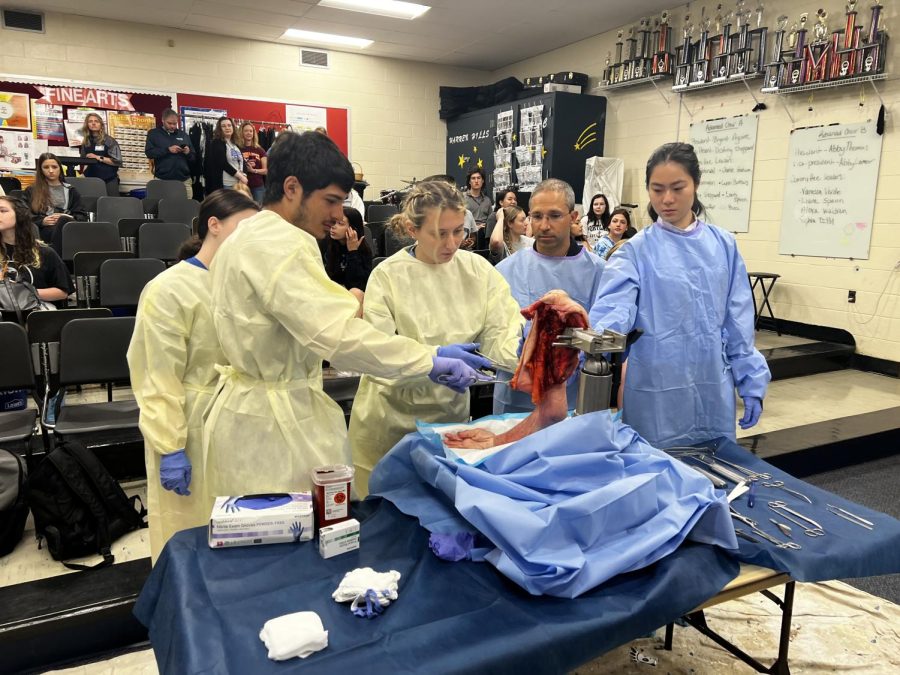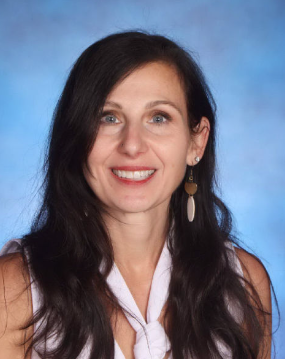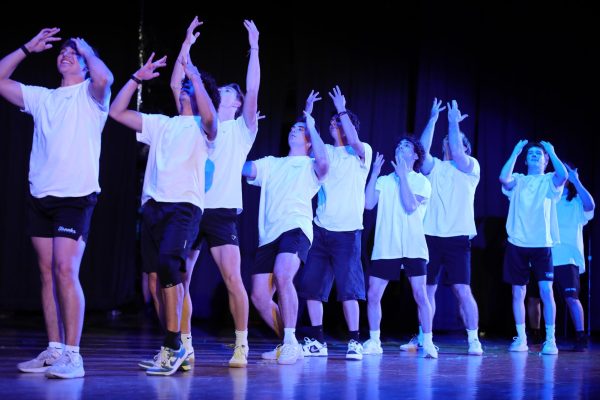Science Students Lend Hands in Dissection
Students Jonathan Lainez, Allison Groelly and Carly Roth get involved in the dissection of an upper limb as “scrub-ins” with Dr Nicholas Avallone.
Select Honors Anatomy and AP Biology students witnessed the greatly awaited Cadaver Day on the lucky day of Friday, 13th.
Science Teacher Alexandra Helle had arranged the Cadaver Day back in February, but it was postponed due to weather.
The event gave students the opportunity to work with Dr. Nicholas Avallone from St. Luke’s University Health Network and Venel Institute to perform a dissection on a human arm. The upper limb was donated by a 91-year-old man who had died of natural causes.
Students were required to write an essay and attend an interview by St. Luke’s representatives who determined their participation as a “scrub-in” for the dissection.
The opportunity was meant to allow students to learn first hand by observing what practitioners do in this part of the medical field.
“I wanted the students to see the authentic skills that you need to have in order to go into the field, especially surgery,” Helle said. “It’s very different going from a book to real life.”
The dissection of the elevated arm was separated into thirds and began with the doctor, a pre-med student, and a few student scrub-ins already finished with the first third of the arm.
After each portion of the dissection, Avallone talked about what he was doing and what the audience was seeing. Simultaneously, there was a 3D visualization of the human arm projected onto a screen to help students follow along with the dissection. Another pre-med student aided with the explanation of the 3D diagram during periods of thoughtful and silent dissection.
Throughout the procedure, Avallone pointed out the details of the anatomy of the arm, including nerves, muscles and tendons, as well as potential injuries that could occur and surgical techniques used to mend them.
He highlighted the importance of knowing the process of the dissection.
“When you learn the anatomy, you know how to deconstruct it in order to fix things when they go wrong,” Avallone told the audience.
All students were engaged throughout the entire presentation and were eager to discuss what they learned afterward.
“The human body is so intricate and when one thing goes wrong like a bone breaking, it can affect you long term,” said senior Ariana Hicks.
“I know I will be leaving here more knowledgeable about my body and I appreciate how much I have learned about understanding myself.”
The majority of the student audience had similar things to say about the experience. Senior Mabintou Fofana summed it up well when she said:
“It’s one thing to read about it, and another to be there and to see it.”
Some students, like senior Carly Roth, used the experience as a deciding factor in their future careers.
“I have been thinking about going into orthopedics,” she said, “and this helped me decide that it was still something that I wanted to do.”
Senior Valentina Waslik had the same idea.
“I wanted to use this as a type of process of elimination because I know I want to go into the field of medicine,” she said. “I just don’t know what part yet.”
Since the subject that was the center of the dissection was from a body donated to science, some students spoke on the importance of organ donations and body bequests.
“It is really good that people donate their bodies because it helps kids like us learn and locate the parts of the body,” junior Kelly McDermott said.
Junior Sophia Zaslow agreed.
“Donating your body to science helps pre-med students to learn about the body in a way that you would not be able to get from a textbook,” she said. “Scientists can also use the donated bodies to do research and tests that can lead to solutions to different illnesses.”





